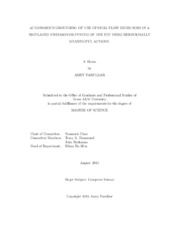| dc.description.abstract | The fly visual system, although tiny when compared to the mammalian visual system, can still perform highly sophisticated functions to help the animal navigate through the environment. An example of such a function is the detection of optical flow. Perceiving and responding to the optical flow is critical to the animal's survival and success. Higher level neurons in the fly's visual system, the Lobula Plate Tangential Cells (LPTCs), respond to different types of optical flow due to rotation and translation, by pooling information from elementary motion detectors (EMDs) in the lower level. In this sense, neuronal responses (spikes) from these optical flow
detectors in the fly carry highly encoded signals.
In this thesis, I investigate how such highly encoded signals can be interpreted and utilized in the fly's brain, while solely operating on the internal spike patterns in its own brain. This is also called the grounding problem. With a computational model of the optical flow detectors in the fly, I show that action (or coordinated motor output) is the only way that the fly can learn the meaning of its internal spikes and generate meaningful, relevant behavior. I show this with two methods of integrating local optical flow information based on physiological and functional model of fly's LPTCs.
The results show that the proposed agent model based on fly's visuomotor system is able to learn a good sensory state to action mapping. This indicates that the agent model and the learning algorithm are able to give promising results for the motion grounding problem in synthetic and natural scenarios. | en |


